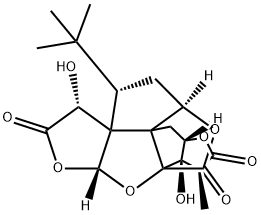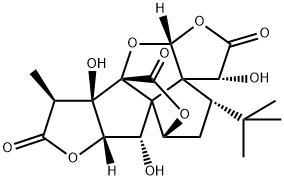HPLC>98% , 22910-60-7
Synonym(s):
(Z)-6-(Pentadec-8-enyl)-2-hydroxybenzoic acid, Histone Acetyltransferase Inhibitor VI, PCAF Inhibitor II, SUMOylation Inhibitor, HAT Inhibitor VI;Histone Acetyltransferase Inhibitor VI, PCAF Inhibitor II, SUMOylation Inhibitor, (Z)-6-(Pentadec-8-enyl)-2-hydroxybenzoic acid, HAT Inhibitor VI;InSolution
| Pack Size | Price | Stock | Quantity |
| 20mg | RMB912.00 | In Stock |
|
| others | Enquire |
PRODUCT Properties
| Melting point: | 45~48℃ |
| storage temp. | 2-8°C |
| solubility | Chloroform (Slightly), Methanol (Slightly) |
| form | White solid |
| Boiling point: | 221-223 °C(Press: 4 Torr) |
| Density | 0.9148 g/cm3 |
| pka | 3.08±0.30(Predicted) |
| color | White to Off-White |
| InChI | InChI=1S/C22H34O3/c1-2-3-4-5-6-7-8-9-10-11-12-13-14-16-19-17-15-18-20(23)21(19)22(24)25/h7-8,15,17-18,23H,2-6,9-14,16H2,1H3,(H,24,25)/b8-7- |
| InChIKey | YXHVCZZLWZYHSA-FPLPWBNLSA-N |
| SMILES | C(O)(=O)C1=C(CCCCCCC/C=C\CCCCCC)C=CC=C1O |
| LogP | 9.269 (est) |
| CAS DataBase Reference | 22910-60-7(CAS DataBase Reference) |
Description and Uses
Ginkgolic acid is slightly toxic and is an allergen; for this reason, some sources suggest using only the standardized extract, which is standardized to the flavonoids and minimizes ginkgolic acid content.
Ginkgolic acid is active against the tubercle bacillus. Elsewhere, leaf extracts are used in peripheral arterial circulation problems like arteriosclerotic angiopathy, post-thrombotic syndrome, diabetic vasoconstriction with gangrene and angina, intermittent claudication,Raynaud's disease. Extracts are inhaled for ear, nose, and throat ailments like bronchitis and chronic rhinitis.
Extracts of the leaves and fruit of Ginkgo plants have long been used in traditional medicine and have multiple potential therapeutic applications, including ameliorating dementia. However, ginkgolic acids, 2-hydroxy-6-alkylbenzoic acids related to anacardic acids, may be deleterious components in these extracts. Ginkgolic acid C15:1 is a 2-hydroxy-6-alkylbenzoic acid in which the alkyl chain contains 15 carbons and is unsaturated at the 8 position. It inhibits SUMOylation in vitro (IC50 = 3 μM) and in cells without affecting protein ubiquitination. Ginkgolic acid C15:1 directly binds the SUMO-activating enzyme E1, blocking the formation of the E1-SUMO intermediate. Ginkgolic acid C15:1 also suppresses the development of pancreatic cancer xenografts in mice.
Ginkgolic acid C15:1 may be used as a reference standard in the quantitative determination of alkylphenols like ginkgolic acids in Ginkgolic extract using high performance liquid chromatography coupled with mass spectrometry(HPLC-MS).
Ginkgolic acid C15:1 may be used as an analytical reference standard for the quantification of the analyte in Ginkgo biloba plant extracts, and dietary supplements using chromatography techniques.
Safety
| Symbol(GHS) |  GHS07 |
| Signal word | Warning |
| Hazard statements | H317-H413 |
| Precautionary statements | P261-P272-P273-P280-P302+P352-P333+P313 |
| Hazard Codes | Xi |
| Risk Statements | 36/37/38 |
| Safety Statements | 22-24/25-26 |
| WGK Germany | 3 |
| HS Code | 29182900 |





